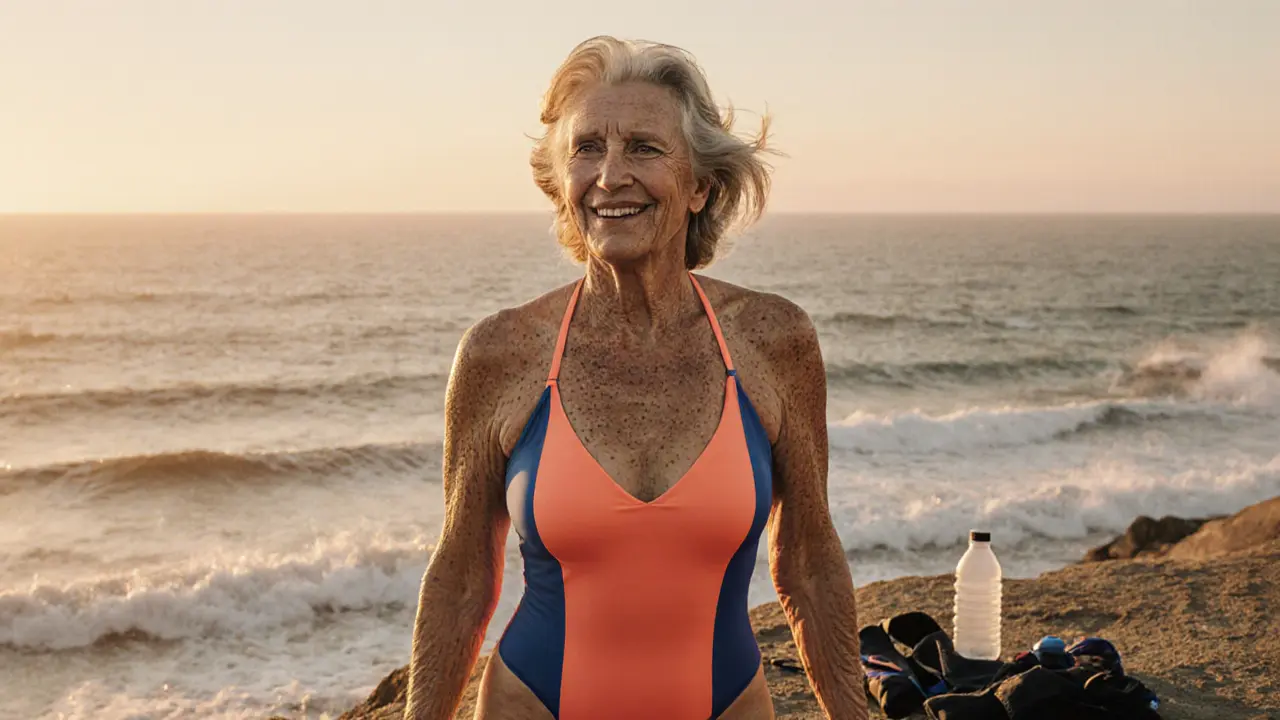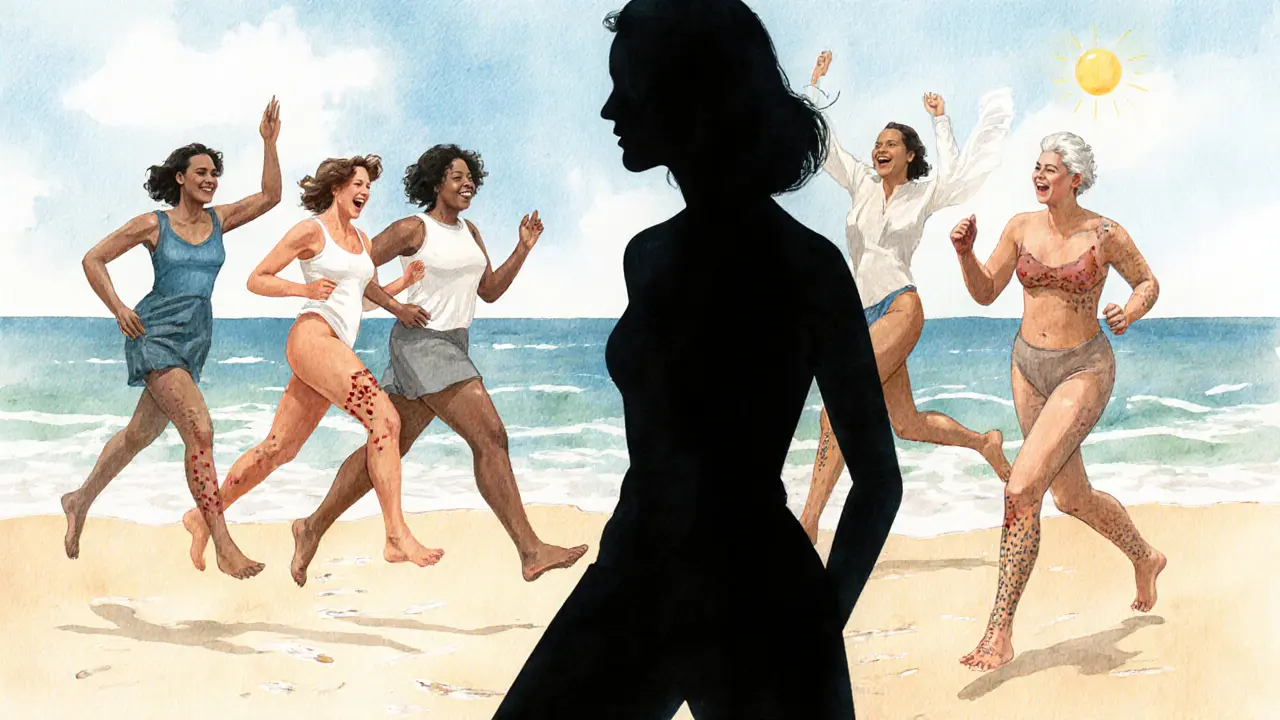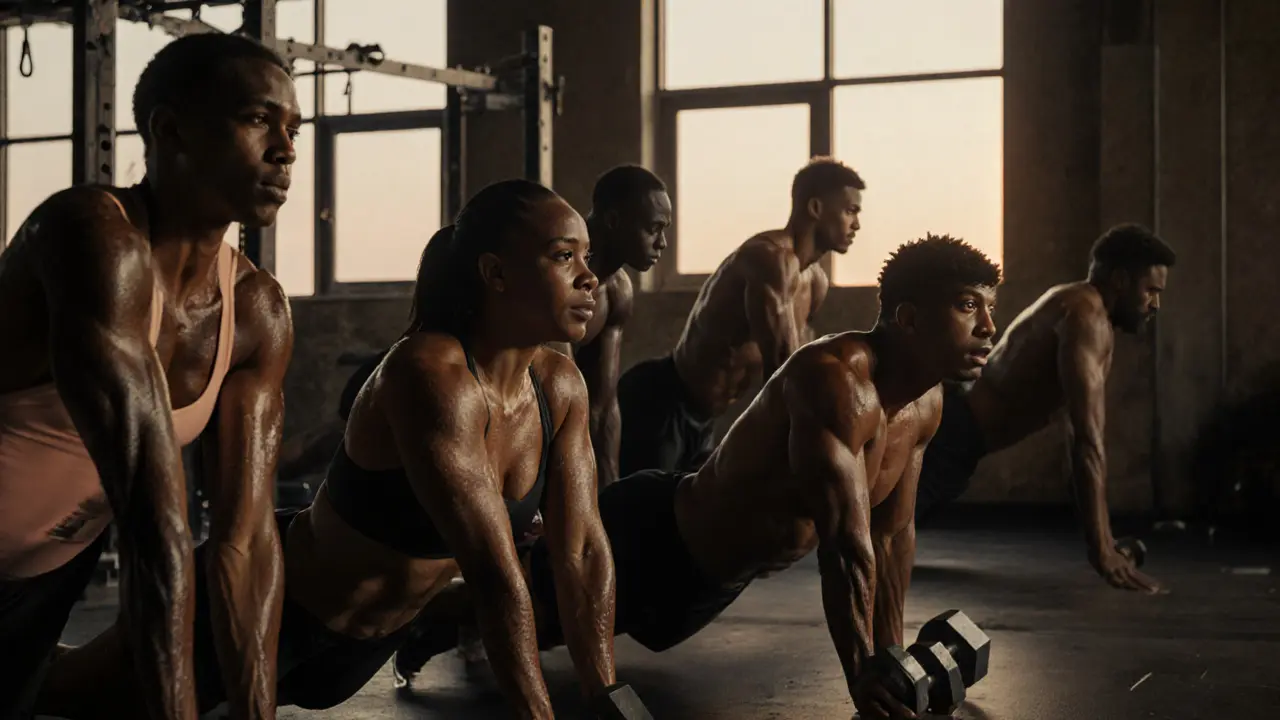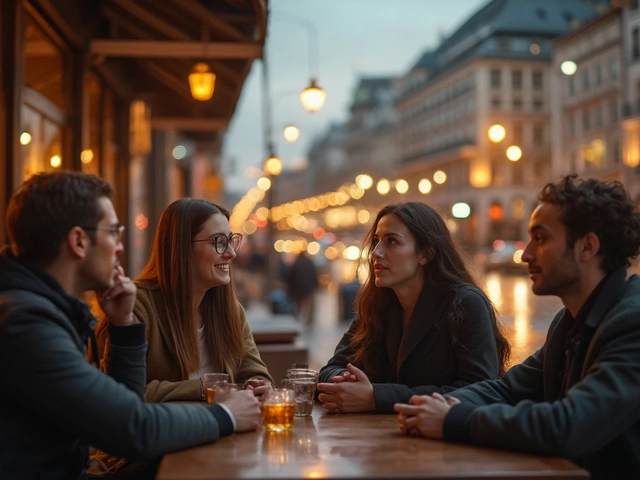You’ve seen them on billboards, in magazines, on Instagram feeds-bikini models smiling under tropical suns, posing on white sand, looking like they’ve got it all figured out. But what if I told you their beauty doesn’t start at the shore? It starts long before the camera flashes, far from the postcards and filters. This isn’t just about tan lines and toned abs. It’s about confidence, discipline, and a quiet kind of strength most people never see.
What Really Makes a Bikini Model?
A bikini model isn’t just someone who wears a swimsuit. That’s the surface. The real work happens behind closed doors: early morning workouts, strict nutrition plans, mental prep, and hours spent perfecting posture and expression. It’s not about being skinny-it’s about being strong. Many bikini models train like athletes. They lift weights, do HIIT, and focus on functional fitness. Their bodies aren’t made for looks alone-they’re built to move, to hold poses for minutes at a time, to stay energized through long photo shoots.
And here’s the truth most ads won’t tell you: not all bikini models are size zero. Some are curvy. Others are athletic, muscular, or naturally petite. The industry has shifted. Brands now want diversity. They want real people who look like the customers buying their swimwear. That means more body types, more skin tones, more ages. A 38-year-old mom with stretch marks and a six-pack is just as valid as a 20-year-old with flawless skin.
Why This Matters Beyond the Beach
When you look at bikini models, you’re not just seeing fashion-you’re seeing a cultural shift. For years, the beauty standard was narrow: tall, thin, airbrushed. Now, brands like Savage X Fenty, Aerie, and even major swimwear labels are featuring models with stretch marks, scars, cellulite, and disabilities. Why? Because consumers are demanding it. People want to see themselves reflected in ads, not an unattainable fantasy.
Bikini modeling today is less about selling a fantasy and more about selling authenticity. It’s about showing that beauty doesn’t require perfection. It’s about confidence that comes from self-acceptance, not from fitting into a mold. That’s powerful. And it’s changing how women-and men-see their own bodies.
How Bikini Modeling Has Changed in the Last Five Years
Five years ago, Instagram was full of filtered, edited bikini shots with hashtags like #bikinibody and #fitfam. Today? You’ll see more unfiltered photos. Real skin. Real sweat. Real life. Models are posting side-by-sides: one edited, one raw. They’re talking about eating disorders, body dysmorphia, and the pressure to look a certain way.
Platforms like TikTok have given rise to a new wave of bikini models who aren’t signed to agencies. They’re everyday people who post their workouts, their meals, their bad hair days-and gain huge followings because they’re real. One model from Florida, who started posting her postpartum body transformation, now has over 2 million followers. She doesn’t use Photoshop. She doesn’t wear a waist trainer. She just shows up, every day.
Agencies are catching on. The top modeling agencies now actively scout for diversity. They’re looking for models who have a story, not just a silhouette. That’s a big change.
Types of Bikini Modeling You’ll See Today
Not all bikini modeling is the same. Here’s what’s out there now:
- Swimwear Brand Models - These are the faces you see in catalogs from brands like Speedo, Triangl, or Solid & Striped. They often have athletic builds and a polished look.
- Body Positivity Models - These models come in all shapes and sizes. They’re often signed with inclusive brands and focus on self-love messages.
- Activewear & Beachwear Influencers - They blend fitness and fashion. Their content is more lifestyle than editorial. Think yoga on the beach, smoothie bowls, and sunset runs.
- Retirement Models - Yes, this is a real category now. Women in their 40s, 50s, and even 60s are modeling swimwear. They’re proving age doesn’t define beauty.
- Male Bikini Models - Once rare, male bikini models are now common in surf and swimwear campaigns. Think surf brands like Roxy and Quiksilver featuring toned, natural male bodies.
Each type has its own audience, its own vibe, and its own message. The common thread? They’re all breaking old rules.

How to Find Real Bikini Models (Not Just Filters)
If you’re tired of the same old Instagram feed, here’s how to find the real ones:
- Search hashtags like #bodypositivity, #realbikinimodel, #unfilteredbikini, or #modelswithstretchmarks.
- Follow independent brands that don’t use airbrushing-check out companies like Summersalt, Girlfriend Collective, or Aerie.
- Look for models who post behind-the-scenes content. If they show makeup removal, sore muscles, or bad lighting, they’re probably genuine.
- Check out TikTok. It’s the best place to find raw, unedited content from bikini models who aren’t signed to agencies.
- Follow photographers who specialize in natural lighting and candid shots. Their portfolios often feature real bodies, not studio illusions.
There’s a whole world of bikini modeling outside the glossy pages. You just have to know where to look.
What to Expect From a Bikini Photoshoot
Think it’s all sunshine and smiles? It’s not. A typical shoot lasts 6-8 hours. You show up at 7 a.m. in the cold, wearing a robe. There’s a team of stylists, makeup artists, and photographers. You change outfits 10-15 times. You hold awkward poses. You’re told to “arch your back,” “tilt your chin,” “smile like you’re thinking of your ex.”
And yes, you’re often cold. Windy. Wet sand sticks to your skin. You’ve been standing for hours. You’re tired. But you still have to look like you’re having the time of your life.
That’s the job. It’s not glamorous. It’s hard. And the best models? They make it look easy because they’ve learned how to turn discomfort into confidence.
How Much Do Bikini Models Actually Earn?
It’s not all six-figure contracts. Most bikini models earn between $50 and $500 per shoot. Top-tier models with huge followings might make $5,000 or more for a single campaign. But those are rare.
Many models supplement their income with fitness coaching, affiliate marketing, or selling their own swimwear lines. Some even run YouTube channels teaching workouts or healthy eating. The most successful ones treat modeling like a business-not just a job.
And here’s the kicker: most models don’t make money from the photos themselves. They make it from the platform they build around them. Followers = influence = partnerships.

Bikini Models vs. Fashion Models: What’s the Difference?
| Aspect | Bikini Model | Fashion Model |
|---|---|---|
| Body Type | Athletic, toned, varied sizes | Tall, slender, often size 0-2 |
| Focus | Health, confidence, lifestyle | Design, fabric, runway presence |
| Typical Shoots | Beach, pool, studio with natural light | Runway, high-fashion editorials |
| Editing Standards | Minimal-real skin encouraged | Heavy-skin smoothed, limbs lengthened |
| Brand Partnerships | Swimwear, activewear, supplements | Luxury fashion, jewelry, perfume |
| Public Perception | Relatable, aspirational, authentic | Elite, distant, unattainable |
The gap between these two types of modeling has never been wider. One celebrates real bodies. The other still clings to old ideals.
Frequently Asked Questions
Are bikini models required to be super skinny?
No. The industry has moved away from that standard. Today’s bikini models come in all shapes and sizes. Brands are actively seeking curvy, muscular, and postpartum bodies because their customers are diverse. You don’t need to be a size zero to be a bikini model-you just need confidence and consistency.
Do bikini models have to be in the public eye?
Not at all. Many work quietly for catalogs or local brands without ever posting online. Others build their careers on Instagram or TikTok. Some even do freelance work without any social media presence. It depends on the brand and the contract. There’s no single path.
Is bikini modeling only for young women?
Absolutely not. Women in their 40s, 50s, and beyond are modeling swimwear more than ever. Brands like Lane Bryant and Swimsuits For All feature models over 50. One 62-year-old model from Florida, who started after retiring from teaching, now has a contract with a major swimwear brand. Age is not a barrier-it’s an asset.
Do bikini models use Photoshop?
Some do, but it’s becoming less common. Many brands now require “no retouching” clauses in contracts. The goal is authenticity. A slight shadow, a bit of cellulite, or a stretch mark can actually make a photo more powerful. Consumers trust real more than perfect.
Can anyone become a bikini model?
Yes-if you’re willing to put in the work. It’s not about being the most beautiful person in the room. It’s about showing up, being consistent, and believing in yourself. Many models started with no experience, no agency, and just a phone camera. They built their brand slowly. You don’t need to look like a celebrity. You just need to be you.
Final Thought: Beauty Isn’t a Pose
The next time you see a bikini model on a beach, don’t just see the tan skin and the smile. See the person behind it. The one who woke up early to train. The one who fought self-doubt. The one who decided, after years of being told she wasn’t enough, that she was worthy-not because of how she looked, but because of how she showed up.
That’s the real beauty. Not on the shore. Beyond it.






Antony Silson
Real talk: most of these ‘body positivity’ models are still filtered. Just less obviously. The ‘no retouching’ clauses? Half the time they’re negotiated out. And don’t get me started on how ‘curvy’ still means a size 8 in this industry. Real diversity? Nah. Just rebranded exclusion.
They’re not breaking rules. They’re just playing a new version of the same game.
Rick Vaughn
Wrong. This is performative activism. The industry doesn’t care about real bodies. It cares about clicks. That ‘62-year-old model’? She’s a marketing prop. The same brands that feature her still pay skinny girls 10x more. This isn’t progress. It’s optics.
Jenna Song
Oh please. You think a ‘body positivity model’ with stretch marks and cellulite is somehow more authentic? Honey, she’s still posing in a $300 bikini under professional lighting, with a team of stylists, while her Instagram bio says ‘Join my 30-day glow-up challenge’ and sells detox tea.
Real authenticity doesn’t come with a Shopify store. Real authenticity doesn’t care if you have 2 million followers. Real authenticity is just… existing. No caption. No brand deal. Just a woman in a bathing suit at the lake, not caring if anyone sees her.
These ‘models’ are just the new supermodels. Same pressure. Different filter.
Kerrigan Arnold
I’ve trained with bikini models for years - not as a coach, but as a friend. They’re some of the hardest-working people I know. Not because they want to look good for strangers, but because they’ve learned to respect their bodies after years of being told they weren’t enough.
Yes, the industry is messy. Yes, some of it’s performative. But the ones who stick around? They’re not doing it for the likes. They’re doing it because they finally found their voice - and they want to help others find theirs too.
Don’t dismiss the movement because it’s imperfect. The fact that a 45-year-old mom can post her postpartum body and get 10,000 messages saying ‘I needed this’? That’s not marketing. That’s healing.
Keep looking for the real ones. They’re out there. Just don’t expect them to be perfect. They’re not trying to be. They’re trying to be seen.
Zachary Smith
Man, I love how this post flips the script. I grew up thinking bikini models were these untouchable goddesses. Then I saw my sister, after having her second kid, start posting her swimsuit pics without editing. No waist trainer. No lighting tricks. Just her. And she got messages from women all over the world saying, ‘I thought I was the only one.’
That’s the real power here. It’s not about the bikini. It’s about the courage to show up as you are - in a world that’s spent decades telling you to shrink.
Keep going. Keep posting. Even if it’s just for one person. That’s enough.
Heather Blackmon
Look, I’m all for body positivity - but let’s not pretend this is American values. In Europe, they still have real fashion models. Real elegance. Here? We’ve replaced grace with gym selfies. This isn’t empowerment. It’s a downgrade. If you want to look good, train. But don’t call a saggy belly ‘authentic.’ That’s not confidence. That’s laziness dressed up as activism.
Real beauty doesn’t need hashtags. It doesn’t need to be ‘relatable.’ It just is.